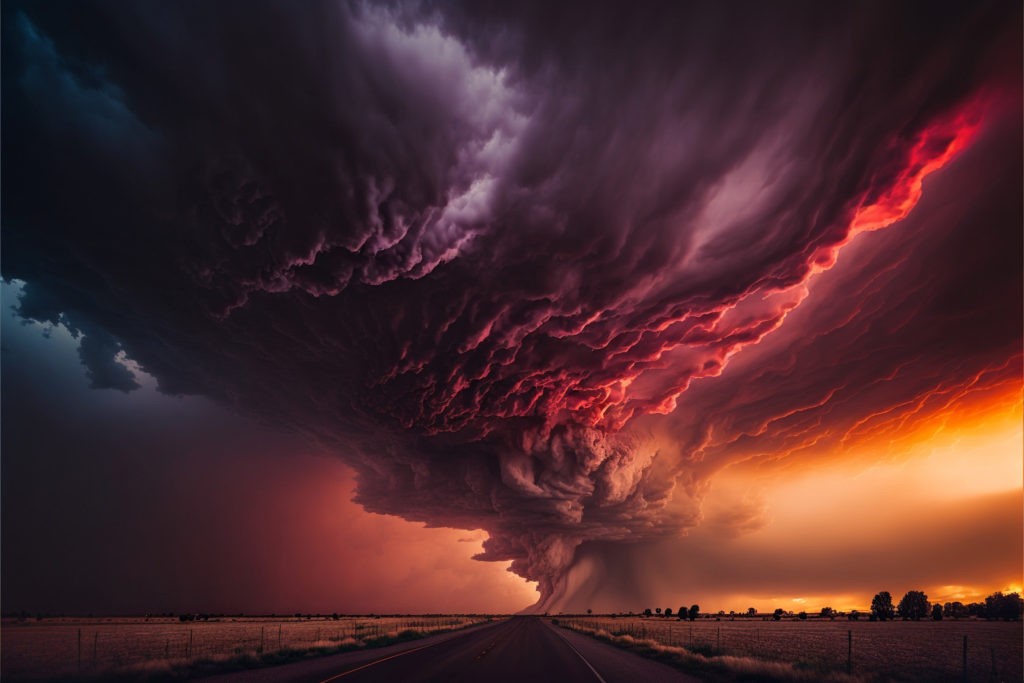TAKING AN INDUSTRY BY STORM
There’s a mounting storm on the horizon of the imaging industry. It’s coming under the unlikely name of Artificial Intelligence. AI. The topic of AI image generation has drawn more interest (and ire) than any discussion I’ve been a part of in four decades as an imaging professional. And believe me, I’ve witnessed a lot of controversial changes over that time span.
Where It All Began…For Me
I’ve been creating special effects photographs since the early 1980’s. Some of you may not have even been on this planet yet; but there I was. My head buried underneath the focusing cloth behind a Sinar 4” X 5” view camera. Using a simple grease pencil to sketch out individual component parts of a photograph on the camera’s ground glass. Making multiple (perfect) exposures on a single sheet of film to create dramatic composite images. Digital photographic capture wasn’t even anyone’s dream yet. Photoshop’s arrival was still a few years off.
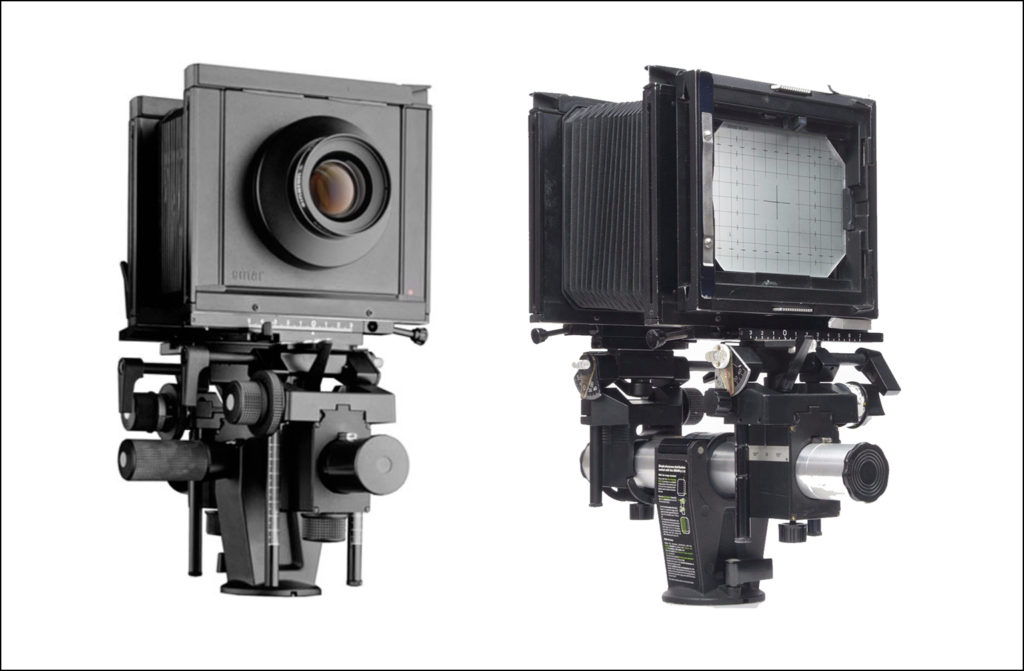
Fast forward 15 years and digital photographic capture became a workable reality for this photographer. In 2001 I disposed of my expensive Hasselblad, Sinar and Nikon film cameras, transitioning 100% into the digital world. All of my colleagues were aghast. “It’s just a fad”, they said. “It will never be as good as film”. “It’s an unproven, unreliable technology”. Two years later they couldn’t give away their film cameras.
New Kids on the Block
With the arrival of digital image capture came an entire new generation of photographers. The playing field had been leveled. Film and processing costs had been eliminated overnight. The instant feedback provided by that small screen on the back of the camera gave 1,000,000 new photographers the courage and confidence to step into the professional imaging arena. Every “Mom With A Camera” became a photographer overnight…and the first smartphone camera was still five years away.
The professional imaging industry would be forever changed; and a lot of established photographic artists were not happy about the situation. “Everyone’s a photographer now!” “Our industry has been ruined”. Do you see where I’m going with this? Yep. It’s happening again today…though this time the villain is AI image generation; and it’s coming on so rapidly that people’s heads are exploding.
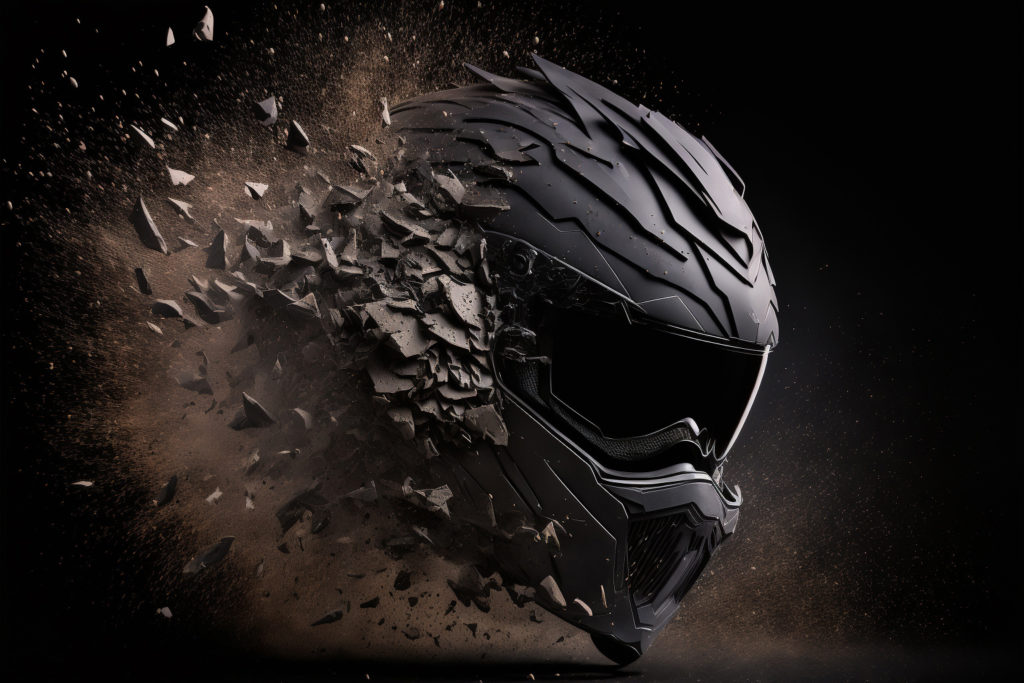
AI Image Generation • What Is It?
Simply stated, AI image generation is the ability to create a piece of art (a photograph, a painting, an architectural drawing, a 3D illustration…whatever) based upon the collective experience of millions of artists…professionals and amateurs alike. The major AI image generation bots have “scraped” a database of some two billion images at this point in time. That number is growing daily. Nothing is being left out. The database includes everything from Michelangelo’s painting on the ceiling of the Sistine Chapel to the iPhone selfie your co-worker posted on Facebook at yesterday’s happy hour get together.
All of those countless images are the source material for computer systems that are able to learn and adapt without following any explicit instructions. They simply use statistical models and algorithms to analyze and draw inferences from patterns in the data. It’s called Machine Learning, folks; and it’s at the very heart of AI image generation. Machine learning allows systems to learn and improve from experience. The machines learn to use the source data for themselves. They are constantly being fed new data, learning from it, and improving the output based upon feedback from those that are using the technology. It’s getting better…more precise…and more powerful. Every. Single. Day.
Not Child’s Play
To recognize the true potential in AI image generation one must look past the early representations that we’re seeing so much of online today. A lot of what is being showcased are fantasy images of video game warriors, steampunk pirate ships and fire-breathing dragons…all of which tend to look pretty much the same. Especially when social media outlets are overrun with AI “Art” galleries displaying the works of these younger “artists”. Most of these budding “creatives” will grow tired of their new-found “art” in short order and move on to the next great social media challenge.
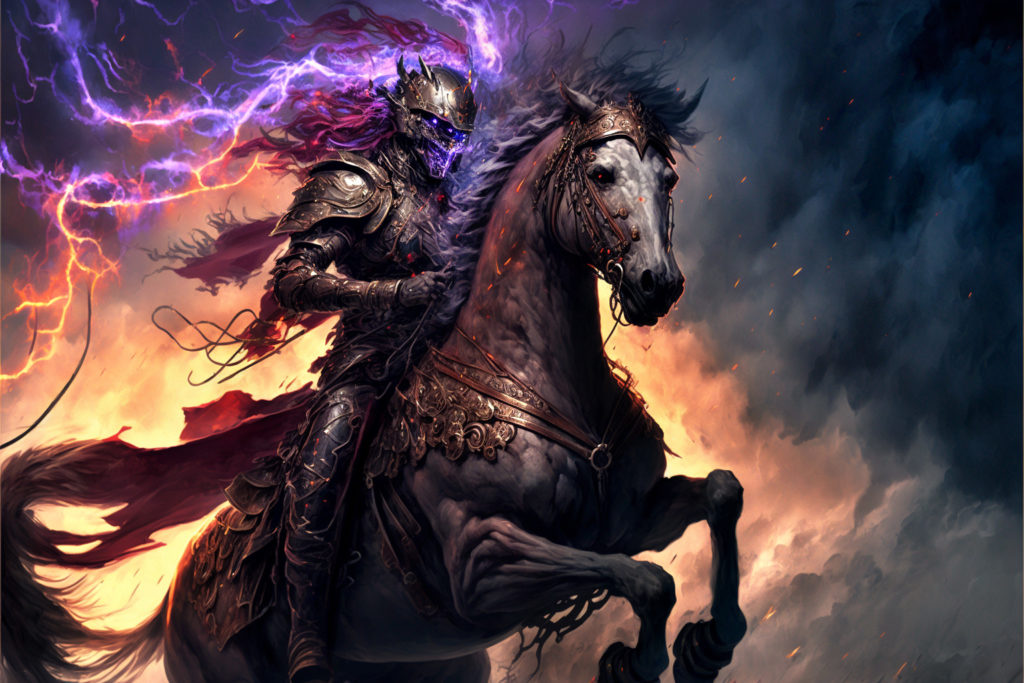
Instead, I implore you to look at AI image generation through the eyes of a professional content creator. Look at the possibilities for creating new and refreshing visual works for major brands and their respective professional advertising partners. Believe me…they are already paying attention…and they are already paying AI image creators.
The Casualties Of Change
Every major technological breakthrough I’ve witnessed in the last four decades has taken its toll on the pool of skilled craftsmen that supported the industry. When the desktop publishing revolution hit high gear in the mid 80’s thousands of jobs in the pre-press industry were eliminated virtually overnight. Drum scanner operators. Typesetters. Color separators. Platemakers. All gone. Obsoleted by the technological advances.
As image makers we often used the services of airbrush artists and dye transfer specialists for photographic retouching. Photoshop single-handedly ended the careers of those highly-skilled craftsmen. CAD (computer-Aided Design) totally replaced those persons that formerly generated two dimensional drawings and 3D models for real world products by hand. AI image generation will come with great human resource displacement as well. The images you see below were not created by an imaginative architectural professional. They were created by me. Moi. With no drafting experience whatsoever. Heck. I can’t even draw a straight line with a ruler. But I do have synthetic and creative imagination. That, and a few other basic skills; along with an understanding of imaging fundamentals, are all an AI artist needs to get started.
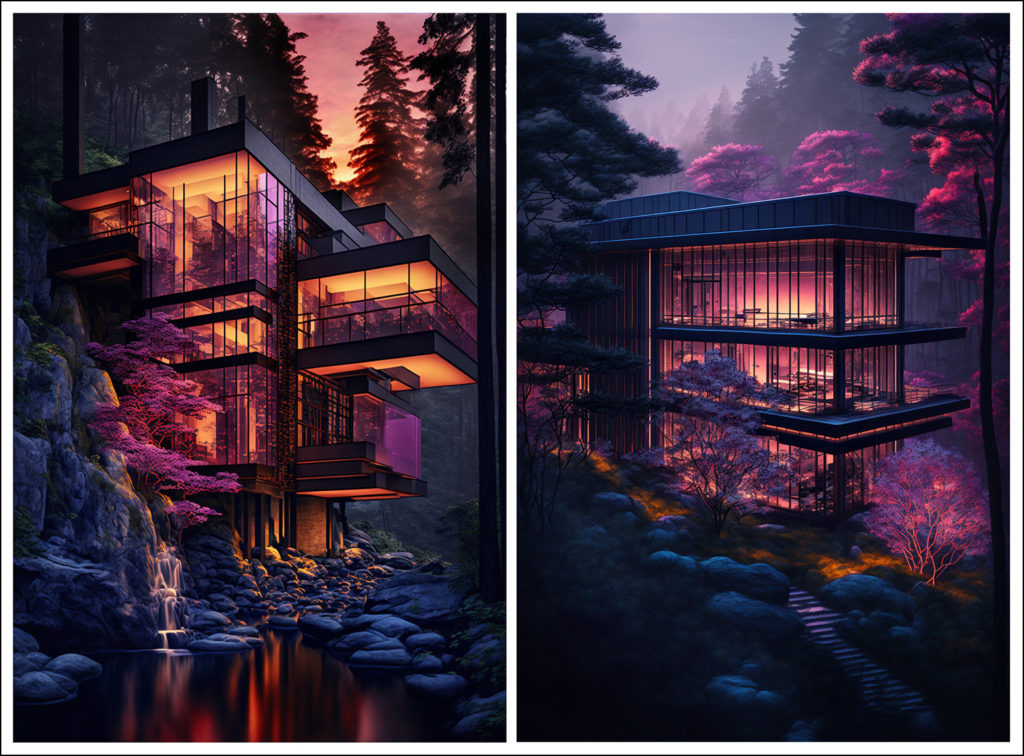
Making It Work For You
The process is relatively simple. You feed your chosen AI bot with written instructions known as prompts. The bot takes that prompt, interprets what it is you are looking for, and creates a selection of images for you. You can choose to upscale any of those images for use, create variations of any or all of the images or direct the bot to try again to come up with something you like more. Don’t expect to get a perfect result the first time you type in your first prompt (though your early results will probably surprise you…pleasantly).
My background as a commercial, wedding and portrait photographer dictated that some of my first experiments explored those genres. In a previous post I addressed the topic of AI and the Future of Wedding Photography. The results I was able to achieve in my early attempts with the technology truly surprised me.
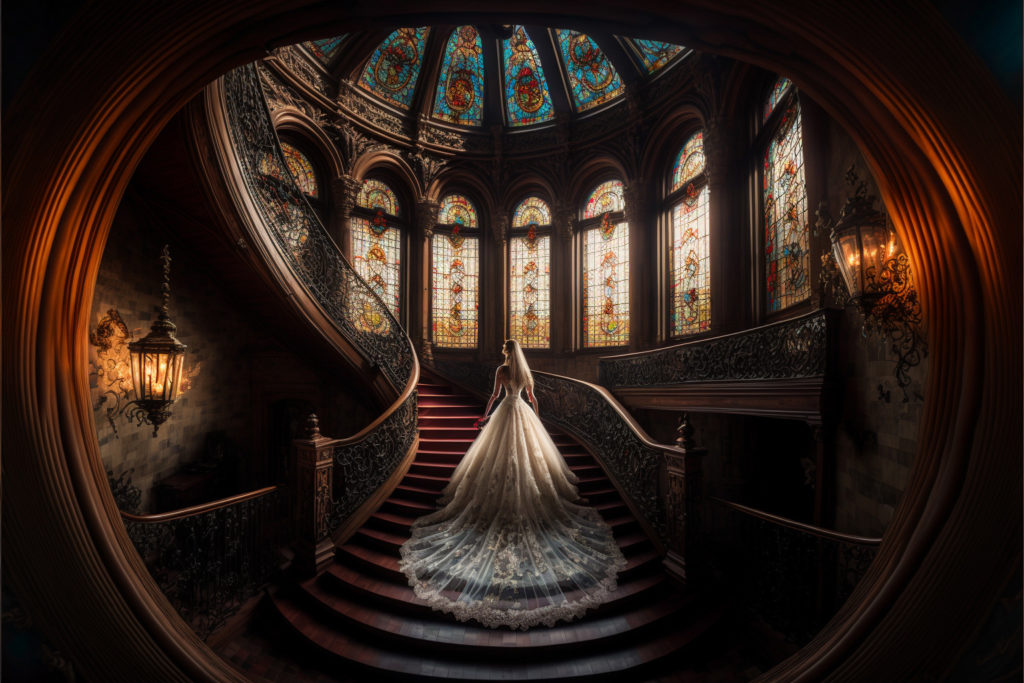
Machine Learning Technology
Herein lies the most valuable piece of advice I can give you. I am going to reiterate, for emphasis, that you’re dealing with machine learning technology here. It is up to you to compose effective prompts. Prompts that the AI bots understand because they are working with millions of other artists…not just you. Spend a little time in the “newbie” rooms that your bot’s server hosts. Look at the results that are others are getting and look at the words they are using in their prompts to get them.
Choose words that deliver the results you want. When your bot delivers a worthy image, let it know. You have the ability to rate the bot’s work. Make sure you do. Develop a “working relationship” with your bot. Encourage it when it performs to your liking. Discourage it when it takes you somewhere you don’t want it to go. Again…this is MACHINE LEARNING technology. It is your job to teach the machine to think in the manner you want it to. I’ll be going into the procedure in much greater depth in a future post.
The Sky’s The Limit
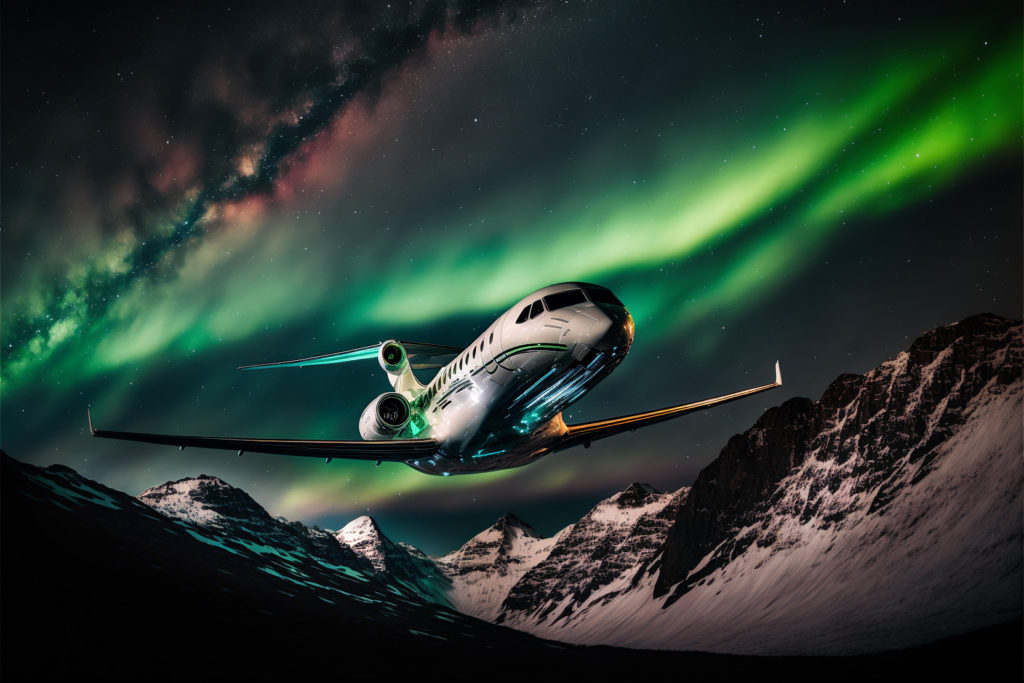
No image idea is out of the realm of possibility any longer. Your client wants an image of a private jet flying low over Arctic mountains with the northern lights and the Milky Way in the sky? No problem. No $100,000 photo production budget either. In much less time than it would take an art director to even imagine some of the logistics involved in coordinating such a photo shoot, the AI artist has already created the finished image and is moving on to their next one.
Do you need Mother Nature to cooperate on your next project? Do you need her to put on a spectacular show on cue…such as the tornado featured at the head of this article? No problem. Just tell your AI image generation bot what it is you’re looking for and wait 60 seconds. The Weather Channel will still be out on commercial break while you’ve envisioned, created and immortalized the storm of the century.
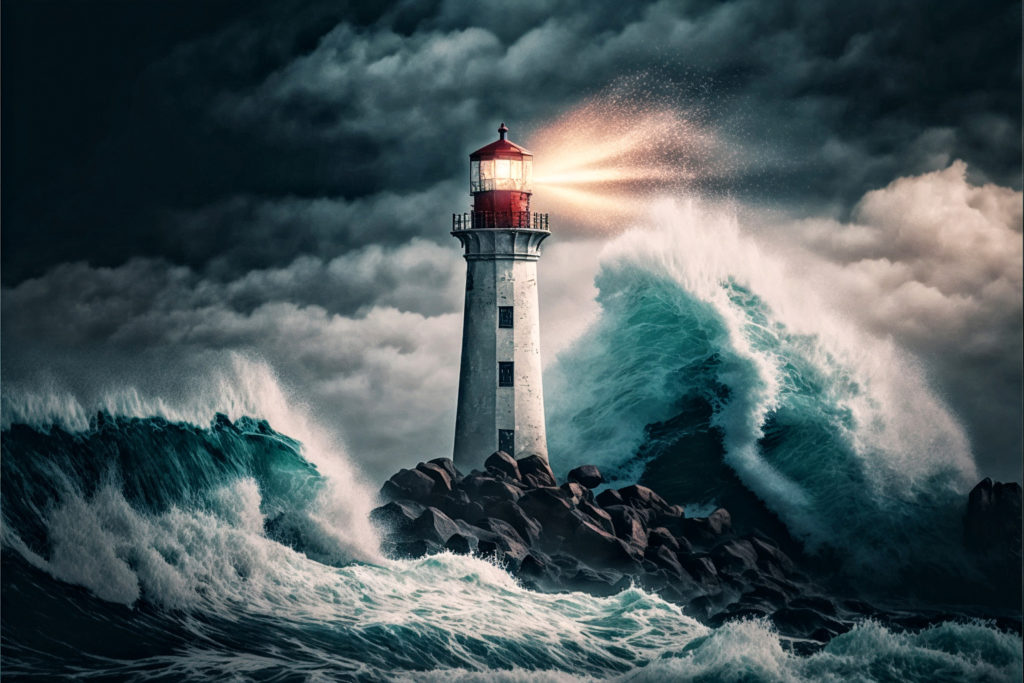
Stake Your Claim
Where you land as an artist in the face of this AI image generation revolution is your choice. You’re not a product of your environment, you’re a reaction to it. You can choose to reject it as a viable art form, or you can embrace its potential to elevate your standing in the imaging game. Know this: It is not going to go away. Right now we’re seeing just the tip of the iceberg.
AI image generation is going to open up an incredible number of opportunities for creatives. Advertising professionals, and the brands they represent, will be clamoring for fresh, new imaging ideas. Content is king in this day and age. Just look around you and count the number of folks that are currently absorbed in their mobile devices, eagerly consuming every visual tidbit that is placed before their eyes.
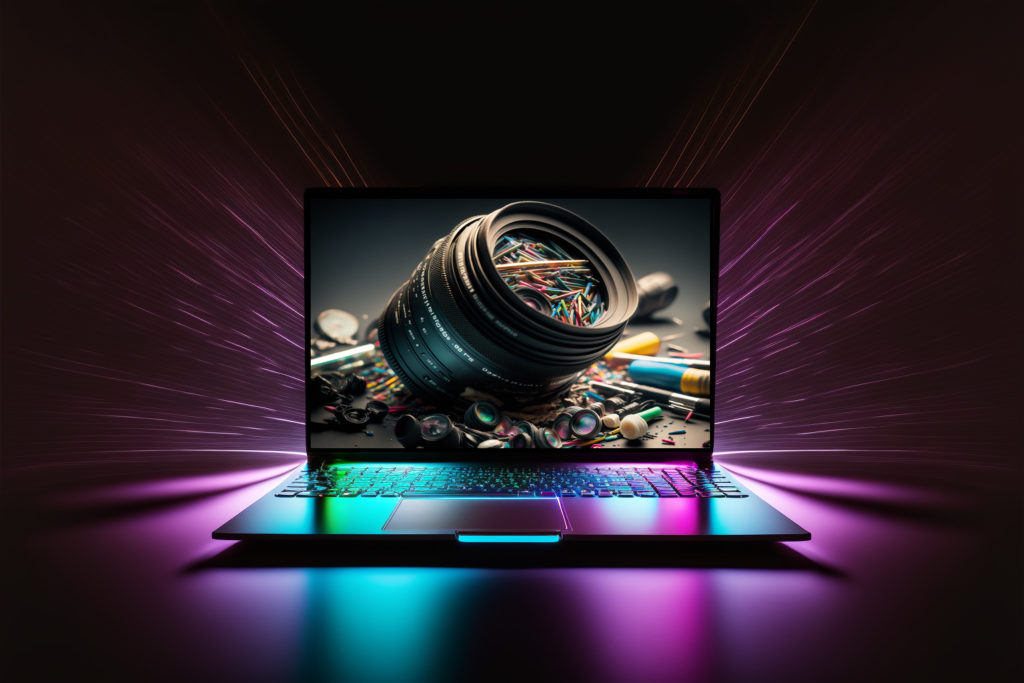
The Future Of The Visual Arts
“Content Creator” is a #1 career of choice for many individuals these days. Our digital way of life is demanding new ideas, and new people to execute them. Traditional methods of advertising (e.g. print, direct mail, etc.) have all but been replaced by the high tech distribution of online and mobile promotions. Brands need to produce exciting visuals…quickly and economically. They need to stand out from the crowd. What better way to be a force in this brave new world of imaging than by leveraging the power and experience of every other visual artist who has ever created something special? Therein lies the power of AI image generation; and it’s a power you will need to harness if you want to stay relevant and competitive in the creative visual arts.
You can take my word on that as someone who enjoyed a four decade long career as a professional photographer. One who created images using much more primitive, conventional tools and methods than those available today. Someone who has personally witnessed, and reacted to, numerous dramatic technological advances over that time period. The best way I can put it into words is by quoting the lyrics from “Bea’s Song” by Michael Timmins, songwriter for the legendary Canadian rock band Cowboy Junkies:
“…if there’s one thing in my life
That these years have taught.
It’s that you can always see it coming
But you can never stop it.”
Where Will Your Imagination Take You Next?
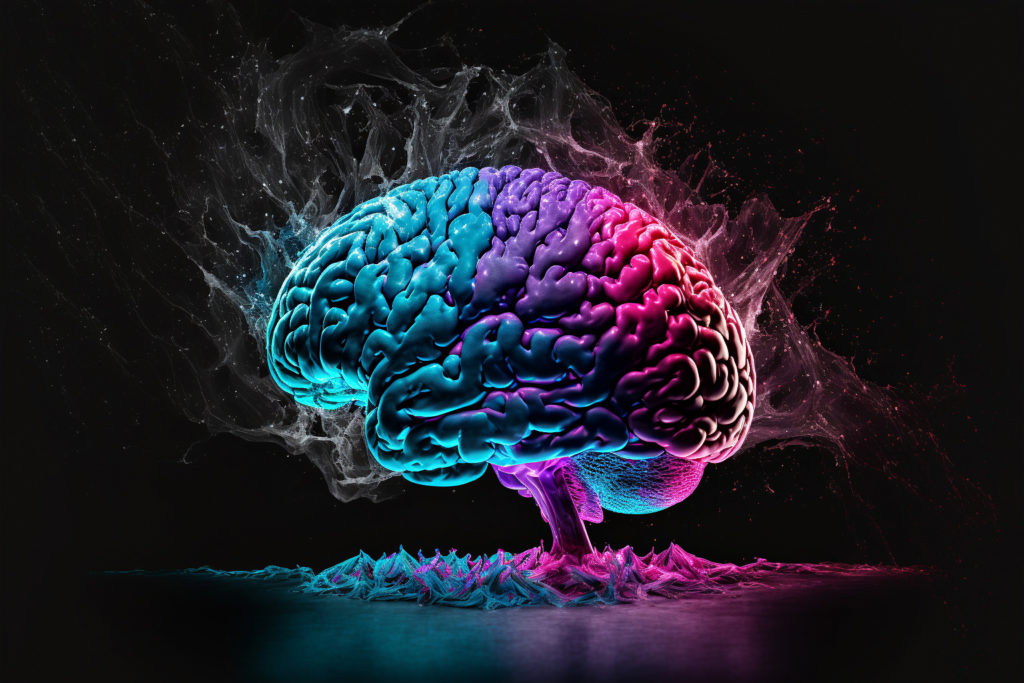
In posts to follow we’ll be discussing some of the philosophical and legal questions surrounding AI image generation? Is it really “art”? Who owns the copyright to an AI generated image? Is plagiarism an issue? We’ll also do a deep dive into the actual steps you have to take as a creator to get an AI image generator to fulfill your creative vision. Be sure to subscribe to Roadcraft USA to stay up to date. We send out occasional email notifications when new features hit the blog.
As always, we welcome comments on today’s topic. Leave yours below. Let us know how you feel about this emerging technology. If you have any specific questions you would like answered, please feel free to contact us directly via email. Until next time…
Click Here to view an interactive visual index page where you can quickly browse through all of the great features that are published on the Roadcraft USA blog.

